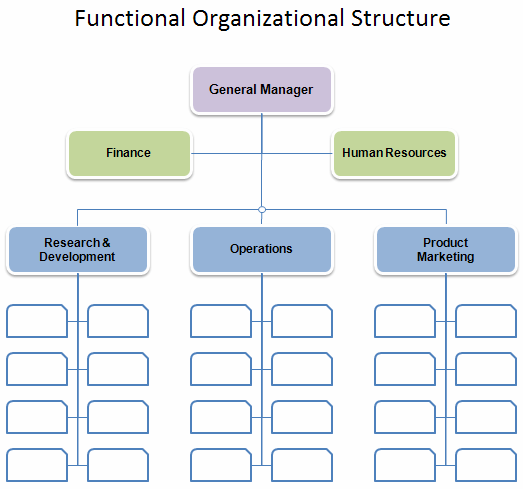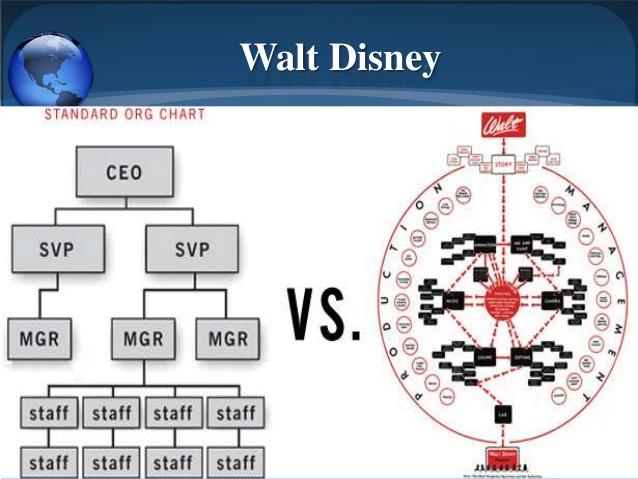Matching structure to strategy
Organizational structure is critical, especially in decision making. It defines the reporting relationship in an organization. More precisely, it determines the accurate positioning of command and how they interrelate with each other. Different companies have different organizational structures to meet their objectives. For instance, the organizational structure that works best for Apple Company may not be useful for a food processing firm. Furthermore, organizational structure changes with changing circumstances. In this essay, we critically evaluate and match the organizational structure of Walt Disney to specific strategies that are aligned with organizational objectives.
Walt Disney applies a diversified strategy (related and unrelated) to achieve its goals and objectives (assignment 3.2). For instance, the company uses a related strategy to acquire businesses in the same production line to expand and increase sales in the long-run. Walt Disney applies a related integration strategy to acquire related firms such as Jim Henson Studios. This company has enabled Walt Disney to increase cash flows and support continuous growth. The company also uses an unrelated diversification strategy to enhance the creation of a robust strategic portfolio (David, 2015). Moreover, the diversified approach enables Walt Disney to realize the economic scope through proper allocation of resources to investment that creates value for shareholders.
Walt Disney also applies a focus strategy in Porter’s five generic strategies (assignment 3.1). Disney concentrates on a particular market niche targeting a specific age group. For instance, Walt Disney focuses on young kids and their families. More so, the company has concentrated on creating an emotional connection between theme parks and their guests. Focus strategy enables Disney to charge a premium price for its product.
Walt Disney has a functional organizational structure based on specialty areas. Specifically, the organization is arranged in functional business units such as marketing, finance, and management. In Disney, all functional and departmental heads are expected to report to the CEO. This structure can best fit differential strategy where specialists are assigned as departmental heads in all functional departments. The professional understands and reviews workers’ performance to ensure it is aligned with organizational goals. Different management team heads the different division of Walt Disney.
The functional organizational structure matches with differential strategy since it ensures that employees can move up to their functional units as they gain experience. This approach encourages employee loyalty toward the organization hence increased employee retention. Moreover, this structure allows knowledge sharing thus making the transfer of new skills within the organization easier. As noted by Naoum (2011) the major disadvantage of this strategy is that when the organization becomes bigger, functional divisions become difficult to manage (p.103).
Moreover, some functional departments may find it difficult to work with others. However, its rival Universal Studio uses a divisional structure in which the company is divided into different divisions operating autonomously as business units under a broader corporate framework. A separate company operates all business units under Universal Studios under a general organizational framework (Gaspar, 2006, p. 182).
Walt Disney can introduce geographical departmentalization. The departmentalization is based on the geographical location of Disney functional units. These functional groups are in charge of the management and production of products in that geographic scope.
This department’s heads ensure they direct, guide, and motivate workers toward organizational achievement goals. Moreover, introducing the divisional structure will allow Disney to evaluate, monitor, and measure organizational goals toward meeting its targets. Disney can also be able not only to measure whether performance meets set standards but also to take corrective action to improve output. For instance, Disney can introduce a divisional structure in its theme parks in the US where a specialist is in charge of all theme parks but is headed by a functional head who reports to the overall manager.


In conclusion, Disney has applied a differential strategy by the acquisition of related and unrelated businesses. The company has a functional organizational structure that supports the measurement of performance and implementation of appropriate action to improve performance.
References
David, F.R. (2015). Strategic management concepts (15th Ed.). Saddle River, NJ: Pearson Education, p. 155-168.
Gaspar, J. (2006). Introduction to business. Boston, MA: Houghton Mifflin Co, p. 178- 185.
Naoum, S. (2011). People and organizational management in construction. London Reston, VA: T. Telford ASCE Press distributor, p. 101-107.